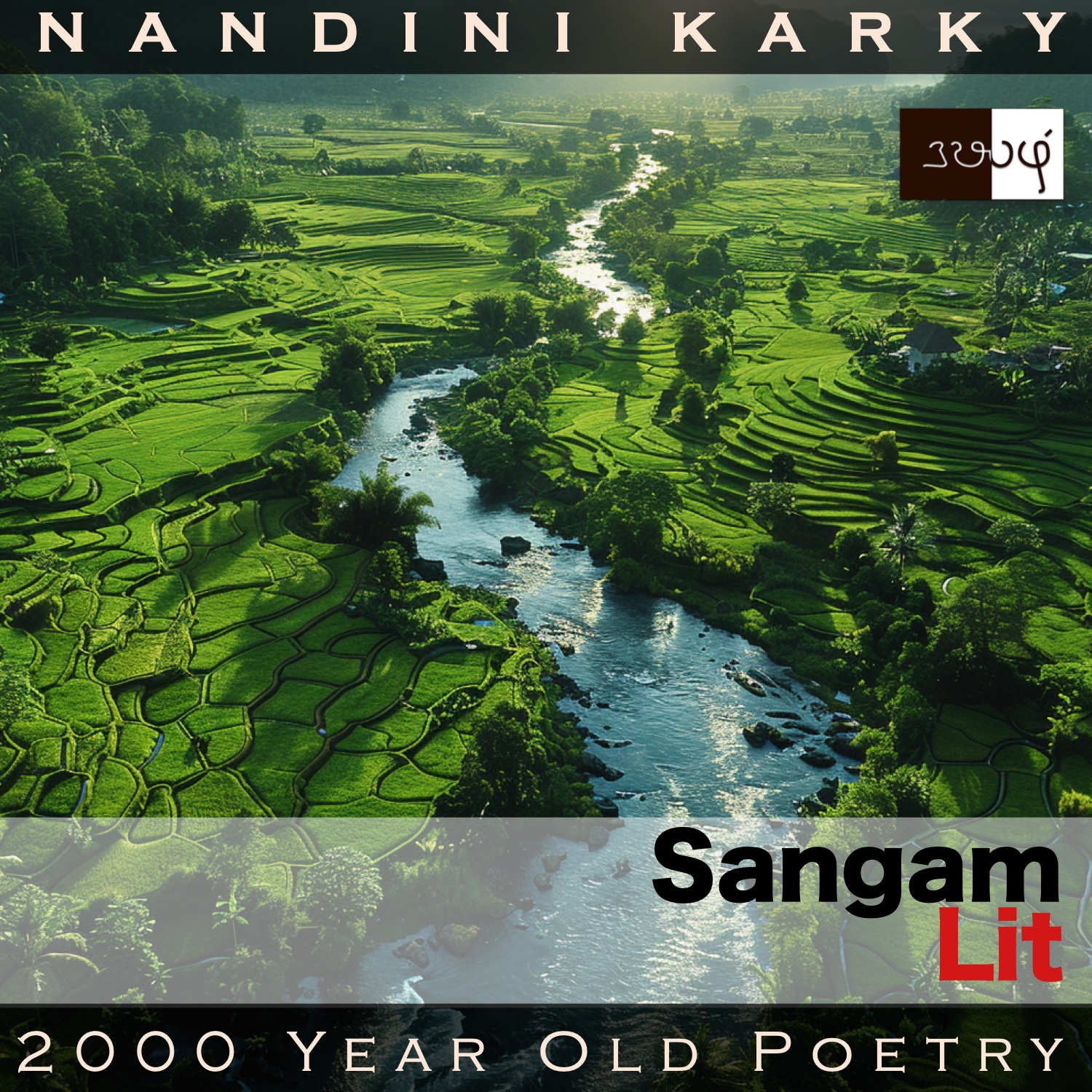Podcast: Play in new window | Download
Subscribe: Apple Podcasts | Spotify | Amazon Music | Android | iHeartRadio | Email | TuneIn | RSS | More
In this episode, we perceive the prosperity of a city, as portrayed in Sangam Literary work, Puranaanooru 352, penned by the poet Paranar. The verse is situated in the category of ‘Kaanji Thinai’ or ‘Defence’ and wonders about the precarious situation at hand.

தேஎம் கொண்ட வெண் மண்டையான்,
வீங்கு முலை………………………..கறக்குந்து;
அவல் வகுத்த பசுங் குடையான்,
புதல் முல்லைப் பூப் பறிக்குந்து;
ஆம்பல் வள்ளித் தொடிக் கை மகளிர்
குன்று ஏறிப் புனல் பாயின்,
புற வாயால் புனல் வரையுந்து……..
……………………………………… நொடை நறவின்
மா வண் தித்தன் வெண்ணெல் வேலி
உறந்தை அன்ன உரைசால் நன் கலம்
கொடுப்பவும் கொளாஅனெ
………………….. தந்த நாகு இள வேங்கையின்,
கதிர்த்து ஒளி திகழும் நுண் பல் சுணங்கின்
மாக் கண் மலர்ந்த முலையள்; தன்னையும்
சிறு கோல் உளையும் புரவியொடு ………………
………………………………………. யாரே.
A verse with many lost lines but clearly situated in the theme of a marriage refusal. The poet’s words can be translated as follows:
“Pouring nectar in a white vessel, the swelling udders… milked; In a neatly woven palm basket shaped like a bowl, wild jasmines from the bush are plucked and placed; Wearing waterlily vines as bangles, maiden climb on a mound and then jump into the stream, making the water gush through the sluice. With copious toddy….. Akin to famous Uranthai, fenced by white paddy fields, ruled by the great and generous Thitthan, even if wealth is given, he doesn’t accept…. Akin to the flower clusters of the young ‘vengai’ tree’, radiantly shines the newly sprouted, many, minute pallor spots on her bosom with a black centre. As for her brother, wielding a small stick, hastening a horse… Who is there?”
Let’s delve into the words found. The poet talks about the act of adding honey to a white bowl and then connects it with the huge udders of a cow, with a few words missing thereafter, but ending with a note on milking. This possibly talks about the practice of getting milk from a cow directly into a bowl already filled with honey so as to offer it to the children of the household. Looks like there’s no need of boiling the milk and so on, and it’s a case of ‘Hot from the udders’! Next, from that white bowl, the poet moves on to rounded palm baskets in which jasmines are being collected from the bush. Perhaps it’s young girls doing these tasks, for next we see them climbing on to a mound and jumping into the tank, making the water rush out of the sluice. With further descriptions which are missing, the poet connects these scenes to the city of Uranthai ruled by a king known for his generosity, by the name Thiththan. To further extol its wealth, the city is described as flowing with toddy and fenced with fields of paddy, implying there’s plenty to drink and eat in this city.
After that vivid video on the city of Uranthai, the poet connects it to the wealth that’s being offered for the sake of claiming a maiden’s hand, saying even if wealth as much as that of Uranthai is given, the father of that maiden accepts that not. All this is while the maiden has attained the age of maturity with her breasts appearing with pallor spots like the flower clusters of the ‘Indian Kino tree’. If that’s her beautiful state, her brothers are in belligerent state, wanting to wage wars with their speeding horses. The poet concludes with a line which ends with the word ‘Who’ and we can understand that he means who would be the one who could marry this maiden, given this situation. In this verse, we take a walk through another picturesque Sangam city and listen on to the tale of the troublesome beauty of a maiden.




Share your thoughts...